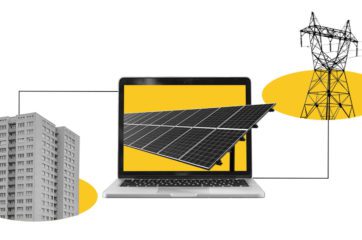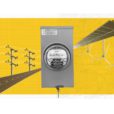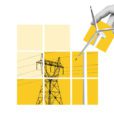Climate XChange’s Dashboard Digest is a deep dive on each of the policies that we track in the State Climate Policy Dashboard and an exploration of how these policies can interact with one another to form a robust policy landscape. The series is intended to serve as a resource to state policy actors who are seeking to increase their understanding of climate policies, learn from experts in each policy area, and view examples of states that have passed model policies. We’re beginning our series by exploring renewable energy and energy storage policies.
Energy regulators at every level (local, state, regional, and national) are tasked with keeping the lights on. But as states around the country clean up their electricity grids with renewable power, there are concerns that renewables will be sufficiently reliable. For example, rooftop solar panels can help power homes and businesses, but without the ability to store the energy they’re left in the dark if the sun isn’t shining. Energy storage presents a solution for those concerns.
Energy storage standards cover a variety of different policies that enable states to more effectively use renewable energy. Some of these policies reduce barriers to the implementation of advanced batteries, while others attempt to incentivize their adoption and modernize entire energy grids. Because energy storage standards are a suite of different policies, they are categorized into different tiers of the policy stacking framework that we discussed in a previous article.
In this article for our Dashboard Digest series, we will take a look at the benefits of energy storage, barriers to its development, and some of the policies that states can and have put in place.
Read more about policy stacking in our previous Dashboard Digest article: Unlocking Renewable Energy Potential through Policy Stacking
Overall State Policy Coverage

The State Policy Opportunity Tracker (SPOT) is a tool from the Center for the New Energy Economy that tracks state-level energy and transportation policies using a framework of potential policy components.
Energy Storage Addresses Reliability and Energy Costs in Hawaii
Island governments face unique challenges when providing reliable and cost-effective energy to their residents. With isolated grids separate from mainland infrastructure and a susceptibility to major power loss after storms, islands can benefit tremendously from implementing energy storage.
Hawaii, like other islands, generates all of its own power, often by importing expensive fossil fuels. Unlike other states, they can’t import just the electricity through interstate transmission lines, it all must be generated and balanced on the islands. The state generates 75 percent of its energy through fossil fuels, and has the highest retail price for electricity in the country.
Utility-scale and distributed energy storage facilities can also help keep the lights on by ensuring that if parts of the grid are damaged, others are kept online. Even if there are blackouts, batteries can help get the grid back online quickly with what is known as a “black start.” Hawaii has already faced blackouts in 2006 and 2008 due to earthquakes and extreme weather, and with climate change leading to more extreme weather events, the risk increases each year.
Recognizing the opportunity to generate cleaner and more affordable energy in Hawaii, the state set an ambitious Renewable Portfolio Standard of utilizing 100 percent renewable energy by 2045. However, with their goal to entirely shift away from fossil fuels, the Aloha State faces real challenges with ensuring that the power supply remains reliable. Energy storage technologies present a way for a state like Hawaii to continue transitioning to renewable energy while meeting peak demands for electricity.
For example, the Kapolei Energy Storage project, a 185 MW battery facility, is scheduled to open on the island of Oahu in early 2023. This project will be one of the largest standalone batteries in the world, and Hawaiian Electric’s modeling estimates it will enable the grid to use ten percent more renewable energy in its first five years. Utility scale storage facilities like this one can help to ensure a sufficient supply of electricity during periods of changing demand and help maintain power following extreme weather events.
Hawaiian utilities appear to be on board with energy storage, because they simply have to be in order to reach the state’s mandate to be carbon negative by 2045. Batteries are the only way for them to manage the necessary load without fossil fuel plants.
Read our Dashboard Digest article on Renewable Portfolio Standards: Creating Demand for Renwable Energy with Renewable Portfolio Standards
Benefits of Energy Storage
Historically, power grids haven’t been set up to favor energy storage because we’ve been able to get away without it. Grid infrastructure and utility business models were designed to encourage large scale generators to provide power for their customers, and draw from other generators when needed. This model has become challenging to adapt to renewable energy, which is generated intermittently and can come from distributed sources, but energy storage can help bridge the gap.
Many states have set ambitious targets to transition to clean energy, some with deadlines fast approaching. An entirely clean energy grid is the ultimate goal for most of these states, but current renewable energy sources are unable to fully meet the needs of the grid. Energy storage systems can help states more effectively meet their renewable energy goals.
The following is a list of some of the benefits of energy storage across all levels of the power grid adapted from the National Renewable Energy Laboratory and the National Conference of State Legislatures:
Flexibility
Electricity prices change partly based on the demand for power at a given time. When demand is high, so is the cost for electricity. The ability of batteries to switch instantly between charging and discharging can help homeowners and battery operators save money on electricity. Batteries can take in power when costs are low, storing the electricity to use later when both demand and costs are higher.
The flexibility of batteries can also help power grids adjust to overall electricity needs. The grid can take in excess power generation during times of low electricity demand and discharge it when demand is higher. When utilities are more aware of an area’s needs, energy storage can help grids operate more efficiently.
Scalability
Because battery storage facilities are often constructed from modular units, both utilities and homeowners can use the same technology to store their power. The simplicity of these systems is beneficial because they can be scaled to the size of the customer that needs them.
Peak Generating Capacity
Grids are required to have sufficient capacity to provide power during the periods with the highest demand, and often use higher-cost generators, like natural gas “peaker” plants, to ensure it’s available. Renewable power sources, while able to generate a lot of energy, are often not fully able to meet this requirement because of the uncertainty of how much energy these resources will generate at a given time. These peaker plants need to be turned on quickly in a pinch, which renewables aren’t set up to do. But energy storage systems can be turned on and off instantaneously, making them a perfect replacement for expensive fossil fuel plants.
Black Starts
As mentioned earlier, it’s important that grids have the capability to restart after a full disruption. These black starts are done by utilizing specific generators that are able to be turned on quickly and provide a sufficient amount of power necessary to get the grid back online. Though these total blackout events are rare, it’s crucial that grids get back online quickly, both for economic and public safety reasons. Currently, most of the country’s black start generators are either natural gas or hydroelectric, but battery storage solutions can be utilized for the same purpose.
Reduce Power Line Congestion
Sometimes there is more power being generated, from renewable or non-renewable sources, than the transmission lines can handle. This congestion can cause supply and demand issues with volatile prices depending on how much electricity is available. Battery storage can help with this problem by absorbing excess energy and injecting it back into the grid when there may be insufficient energy production.
On-site Storage
In addition to the utility-scale benefits of energy storage, batteries can be really useful for homes and businesses by providing on-site storage. Not only could batteries be used for backup power in an emergency, but they can help make solar generation more effective. Solar combined with energy storage can make distributed generation more appealing by giving homeowners the option to store electricity during the day and use it at night. One Hawaiian utility is even offering higher electric bill credits to customers that inject energy into the grid at night, which would require solar paired with energy storage.
But Is Energy Storage Clean?
It’s important to note that excluding the battery’s manufacturing process, batteries are only as clean as the energy that is being stored. If the electricity being generated is entirely from renewable sources, then batteries will be charged with and eventually discharge renewable energy. For all intents and purposes, this would be considered clean.
But batteries can also be charged with fossil fuels or other non-renewable sources and become a way to store dirty energy. Although batteries charged this way would still have some of the benefits that clean energy storage solutions do, this practice could actually increase overall emissions. Due to some energy being lost during the storage process, batteries don’t actually discharge 100 percent of the energy put into them. This means that using batteries to store fossil fuel energy sources could lead to increased emissions because of the inefficiency of the storage process. And because the grid has different amounts of energy resources based on the time of day or season, when energy storage is used can affect its overall benefits.
Barriers to Energy Storage
Like other renewable energy technologies, energy storage faces barriers to deployment in a power system that wasn’t designed for it. Here are a few of the hurdles that can get in the way:
Cost of Technology
While the cost of energy storage technologies has come down over time, it can still be prohibitively expensive for some applications. The Levelized Cost of Storage (LCOS) is a measure of the average cost of energy storage over a project’s lifetime, and can be used to compare the economics of different storage applications. LCOS analysis can get complicated, but in general, wholesale and utility batteries are more cost competitive than smaller residential ones.
Utilities’ Integrated Resource Planning
In many states, electric utilities create Integrated Resources Plans (IRPs) to prepare for future energy needs. In these plans, the utilities build a portfolio of energy resources to meet the projected demands. These plans make several assumptions that can be barriers to valuing energy storage:
- Planners view energy demand on a fixed, hourly basis, whereas energy storage can provide flexibility that the plans don’t account for.
- IRPs tend to prioritize having extra energy generation, instead of energy storage, to account for the unplanned needs of the grid.
- IRPs mostly focus on generation, though some states have begun to require that they incorporate storage to balance the grid.
Transmission System Planning
Any utility that has interstate energy transmission must conduct planning processes to identify upgrades and opportunities for projects that help the region, but there’s a lack of clear guidelines on how energy storage fits into the process. The Federal Energy Regulatory Commission can require transmission planners to analyze energy storage options, but only when a stakeholder requests the analysis.
Classification of Energy Storage
In states that have restructured energy markets, electricity distributors cannot own energy generation assets. If one of these states has classified energy storage as a type of power generation, then distribution utilities cannot install storage technologies, even if it’s not intended for generation. This happened in Texas in 2018 when a utility was denied a request to install a storage facility because the state classifies it as generation.
Types of Energy Storage Policies
Energy storage standards cover a wide variety of policy tools that affect different parts of the market to develop and implement this technology. Here are a few examples of energy storage policies that can help states advance this resource:
Procurement Targets
Similar to Renewable Portfolio Standards, procurement targets are a tool for increasing a state’s deployment of energy storage. These are market creation policies in the National Renewable Energy Laboratory’s policy stacking framework. They signal long-term government interest to potential investors, and can increase demand in storage technologies. The target will dictate a certain amount of storage, in MW or MWh, that utilities must procure by a certain date.
California was the first state that passed storage procurement legislation in 2010, requiring the state’s Public Utilities Commission to establish a timeline for each utility. The state set an overall target of 1,325 MW by 2020, and today has around 3,100 MW.
Incentives
States can implement a wide range of incentives for energy storage, depending on their specific goals. Incentive policies expand the market for energy storage by making investments more appealing. General financial incentives, like tax credits, can incentivize individuals and businesses to install energy storage. States can also provide financing for projects and upgrades by updating PACE programs to include energy storage. Illinois did this in 2019 with HB 3501.
To ensure that stored energy is clean, states can give incentives to homeowners and businesses that install solar plus storage technologies. By pairing these technologies, system owners can save on their energy bills by storing power for later use, and the state can be certain that batteries are being used for renewable energy. Oregon passed HB 2618 (2019), which gives rebates to both residential customers and service providers that install these systems, and gives more money to low- or moderate-income households.
Storage can also be used to increase the resiliency of the electric grid over the long-term by providing security during disasters and backup power when there are outages. In 2019, California passed AB 1144, which allocates at least ten percent of funding from the state’s Self-Generation Incentive Program to community storage pilot projects in areas with high wildfire risk.
The Property Assessed Clean Energy (PACE) loan program is a way to finance energy efficiency improvements and renewable projects without large down payments or monthly bills
Storage in Planning Process
States can also require that utilities integrate energy storage into their long-term Integrated Resource Plans (IRPs). Like procurement targets, these policies create demand for energy storage by requiring that utilities invest in the technology. This can attract additional investment because the state is trying to create a stable market for energy storage.
In 2020, Virginia passed SB 632, which amended the state’s IRP process to require that utilities consider a long term plan for how storage facilities will help meet future electricity demand.
State Examples
Massachusetts
In 2018, Massachusetts passed An Act to Advance Clean Energy, which set a procurement target of 1,000 MWh of energy storage by 2025. This new target built on the previous one of 200 MWh by 2020, which was set by the Department of Energy Resources (DOER) in 2017. The law directs the DOER to consider a wide variety of policies for the cost-effective deployment of storage technologies.
The state has also invested in energy storage demonstration projects, which are important to prove that technologies are viable and can be implemented at scale. In 2017, the state’s Advancing Commonwealth Energy Storage (ACES) program gave more than $20 million in grants to over 26 projects that demonstrate various use cases of storage.
Massachusetts has some incentives in place to expand storage development, including allowing storage systems to participate in net metering, with some restrictions. Massachusetts also has a Clean Peak Energy Standard, which builds on the concept of a Renewable Portfolio Standard. This new evolution requires a certain amount of clean energy to be available during peak periods, or times with the highest energy demand. In Massachusetts’ Clean Peak Energy Standard, new storage systems paired with renewable sources are given a 1.5x multiplier, meaning that they are valued more towards the overall requirements.
Virginia
Virginia passed energy storage procurement targets in 2020, setting a requirement of 3.1 GW of storage capacity by 2035 from the state’s two Investor Owned Utilities. Ten percent of the procurement must be deployed behind the meter, meaning on-site storage at a home or business, and 35 percent of the overall target must be owned by non-utilities.
In 2018, the Virginia General Assembly passed SB 966ER, which requires utilities to submit an annual Electric Distribution Grid Transformation Project. These projects are designed to enhance grid reliability and security, and list energy storage facilities as eligible projects.
Resources:
- Energy Storage for a Modern Electric Grid: Technology Trends and State Policy Options — National Conference of State Legislatures
- Grid-Scale Battery Storage — National Renewable Energy Laboratory
About CNEE: The Center for the New Energy Economy was founded in 2011 as a department at Colorado State University by Colorado’s 41st Governor, Bill Ritter Jr. The Center convenes and facilitates dialogue among policymakers and stakeholders, connects energy policy leaders and experts, creates and maintains free, publicly available tools and resources, and publishes energy policy research.
About The State Policy Opportunity Tracker (SPOT) for Clean Energy: The SPOT for Clean Energy is a hub of information on state-level clean energy policy. Intended as a planning aid, the SPOT for Clean Energy aims to inform decision-making by providing policymakers, regulators, and interested stakeholders a clear snapshot of existing state policies and opportunities for future policy adoption.






